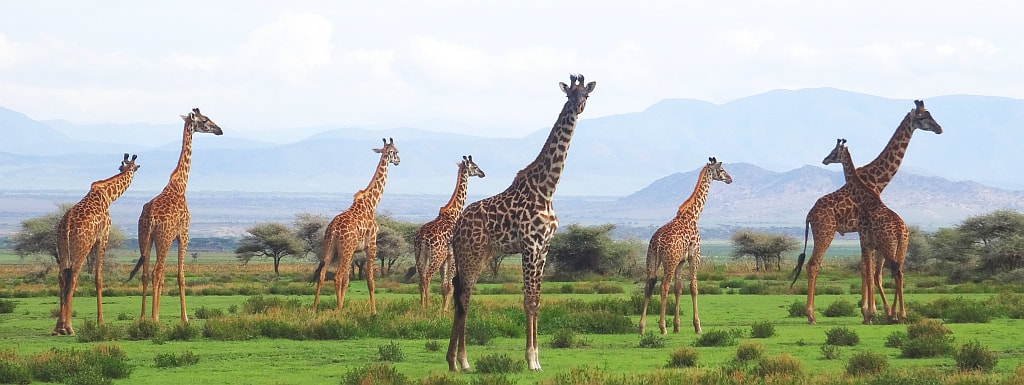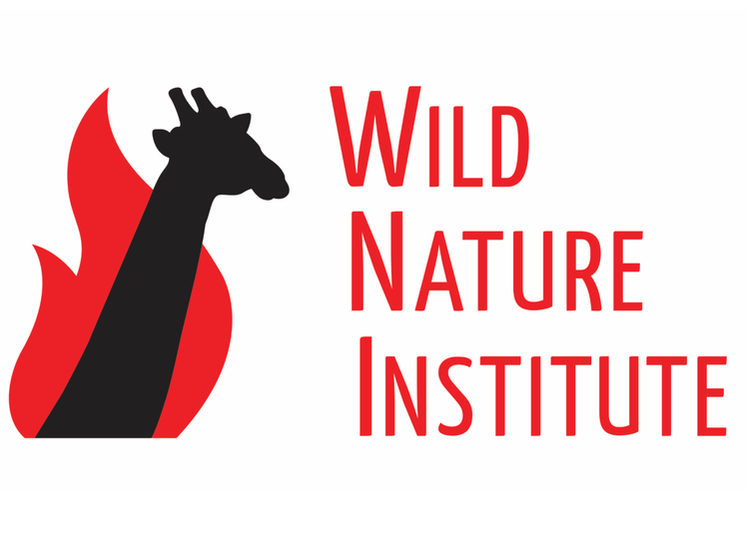|
By Derek Lee, Wild Nature Institute Highlights
•Home ranges of giraffes near populated towns were larger than those farther away. •Dense human areas may force giraffes to range farther to obtain resources. •No such negative relationship was evident with indigenous pastoralist homesteads. •Rainfall explained 74% of the variation in giraffe home range size across Africa. •Home ranges were smaller in regions with higher rainfall and greater productivity. ARUSHA, Tanzania, 22 February 2019 – Giraffes are huge browsing animals that live in African savanna ecosystems where they must find everything they need to survive and reproduce in landscapes increasingly impacted by human activities. People are converting natural savannas to towns and farms, and cutting trees for fuelwood and charcoal industries, all of which potentially degrade giraffe habitat. The spatial area over which an animal repeatedly travels in search of food, water, shelter and mates is the home range, a concept used by ecologists to describe space use by animals. Home range behavior is an expression of an animal’s decision-making process about how to access the resources needed for survival and reproduction. A new study examining what affects the size of giraffe home ranges was published this week in the journal Animal Behaviour by an international team of wildlife researchers from University of Zürich, Penn State University, and Wild Nature Institute. The team found that giraffes living closer to towns had larger home ranges than giraffes living far from towns, suggesting a need to range longer distances—and expend more energy—to obtain critical resources in human-impacted areas. No such relationship was evident with bomas, which are homesteads built by indigenous livestock-keeping Maasai people, suggesting that giraffes are tolerant of more traditional, lower-impact land uses. “Giraffes are vulnerable to extinction after a 40% population decline during the past 3 decades,” said Mara Knüsel a graduate student at the University of Zürich and first author of the study. “Identifying factors affecting space use help wildlife conservationists to make better decisions for at-risk species such as giraffes.” As one of the largest herbivores on earth, giraffes have a profound impact on plant populations, vegetation structure, and ecosystem processes where they live. Giraffes are also a favorite animal sought by ecotourists on safari in Tanzania, where the safari industry is the number-one dollar earner and the largest economic sector in the country. “Most studies that previously looked at home ranges of giraffes didn’t look for environmental factors that determine the observed home range size, so this study goes beyond the pattern to reveal the process behind it,” said Monica Bond, PhD candidate at University of Zürich and senior author of the study. The team quantified home range sizes for 71 adult giraffes from data collected over 6 years, and examined correlations between individual home range sizes and environmental and anthropogenic factors in the spatially heterogeneous Tarangire Ecosystem of Tanzania, to better understand potential mechanisms driving space use of this threatened megaherbivore. They also compared home range estimates from published data for 8 giraffe populations across Africa, and examined the relationship between giraffe home range size and mean annual rainfall at the continental scale as a potential explanation for observed variation in space use among populations. Rainfall was negatively correlated with home range size and explained 74% of the variation in giraffe home range sizes across Africa. This relationship between rainfall and space use by a large herbivore is not surprising, given that rainfall is the main driver of vegetation productivity and thus food availability. Greater availability and access to critical resources such as food and water leads to smaller home range sizes. “Human disturbance and fragmentation of habitat in and around densely populated areas likely reduced the local forage and water resources available for giraffes, forcing individuals to increase their movements and use of space to obtain these resources,” said Knüsel. “Similarly, lower rainfall and lower primary productivity forces individuals to range more widely.” The study at the publisher's site: https://doi.org/10.1016/j.anbehav.2019.01.017
0 Comments
Your comment will be posted after it is approved.
Leave a Reply. |
Science News and Updates From the Field from Wild Nature Institute.
All Photos on This Blog are Available as Frame-worthy Prints to Thank Our Generous Donors.
Email Us for Details of this Offer. Archives
July 2024
|
|
Mailing Address:
Wild Nature Institute PO Box 44 Weaverville, NC 28787 Phone: +1 415 763 0348 Email: [email protected] |
|


 RSS Feed
RSS Feed
